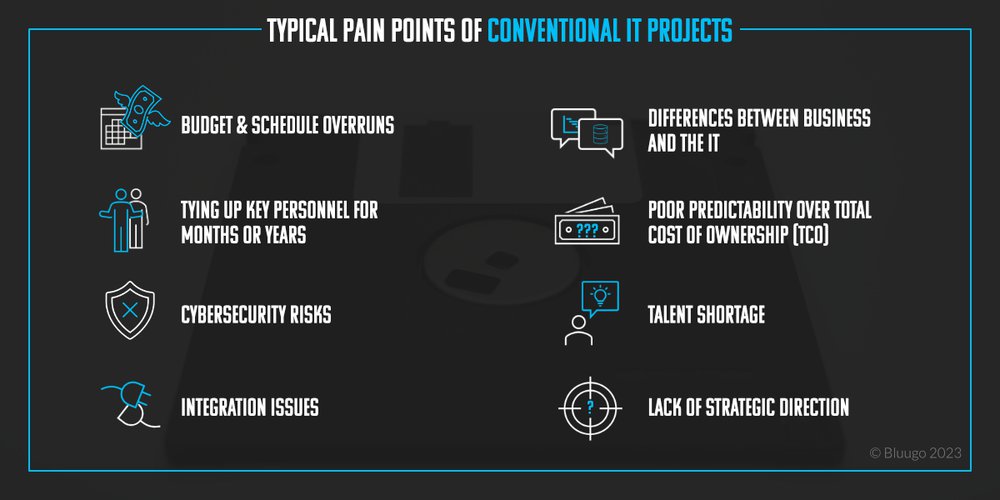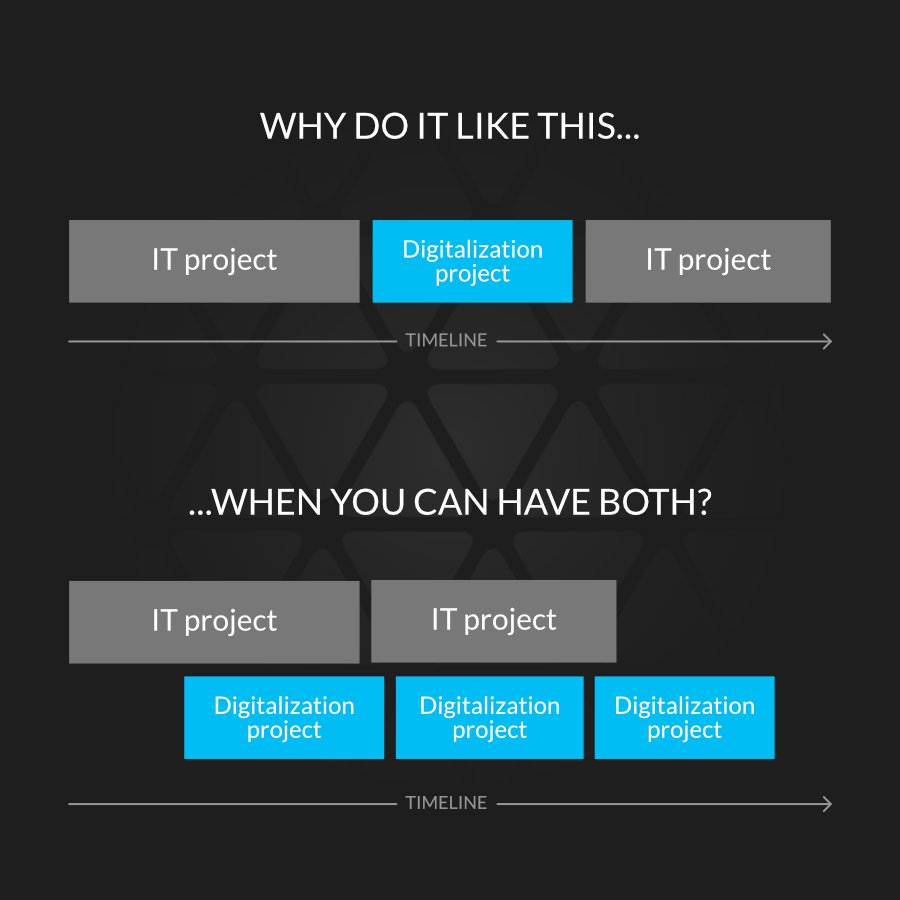
Business digitalization shouldn’t be an IT project
Every B2B company wants to digitalize their business, but many fail to see the difference between digitalization and traditional IT projects – a mistake that often ends up costing fortunes.
Every company wants to digitalize, but most are failing
A lot has changed in the world during the past couple of years, but at least one thing has stayed the same: digitalization and digital transformation remain some the hottest megatrends of the business world.
By now, every company should have realized the huge potential of leveraging digital tools in their business, and also understand the consequence of not investing in them – risking losing their competitive edge. Because of this, it is easy to understand why the words “digitalization” and “digital transformation” can be found in the strategy of pretty much every listed company in the world.
So, everyone wants to go digital – that’s great.
Meanwhile, 84% of digital transformation initiatives are failing – not so great.

The goal is in sight, but getting there is the real challenge
How can it be that more than 4 out of 5 digital transformation initiatives fail in one way or another?
In our experience, the problem is not that companies wouldn’t know what they want. In most digitalization initiatives, the objectives are quite clear and usually revolve around increasing end-to-end visibility, data-driven decision-making, and effective collaboration between stakeholders across the value chain.
The real challenge seems to be getting there – turning the initiatives into actual solutions. Only 35% of digitalization projects meet their original budget and schedule, while the average time-to-market is around 1-2 years.
Digitalization shouldn't be an IT project
So, there seems to be a massive misalignment between what companies think they are doing and what they are actually doing. Everybody wants to go digital, leverage cutting edge technologies, and implement modern solutions, but a majority end up managing conventional IT projects. The destination and the road to get there simply don’t match.
What begins as an innovative digital transformation initiative led by the business, often ends up being yet another waterfall-style IT project managed by the IT department. Focus shifts from the business to technical execution, and the original objectives get buried beneath the complex and exhausting project management. Combined with other factors, such as cyber security and integrations issues, this produces an impossible mine field of risks and concerns to be navigated by the business decision-makers.

Same old tools, same old results
One of the main reasons why so many companies end up stuck with exhausting IT projects is the wrong choice of tools for the job.
Modern business digitalization revolves strongly around seamless data sharing and collaboration between every stakeholder in your value chain – both internal and external. Still, many companies are trying to build these solutions using conventional IT tools, such as ERP systems, that are mainly built for internal processes. This is a fundamentally flawed approach that can lead to even bigger challenges in the future.
When the used tools are the same ones companies have worked with for the past 30 years, it is natural to also embrace corresponding working methods which are designed for said tools. This is a very dangerous approach because both halves of the equation feed each other. Before you know it, you find yourself leading a modern digital transformation initiative, but running the project like it’s 1987.

Even though ERPs alone do not meet the requirements of modern B2B digitalization, they shouldn’t be completely ignored either. By utilizing modern digital platforms, like Bluugo’s Tracking Cloud®, companies can leverage their existing master systems while simultaneously embracing an agile and business-first approach for their initiatives. Read more about complementing ERPs with modern tools here.

Check out our other blog “Focusing on ERP systems in business digitalization can ruin a company” for more thoughts about ERPs and their place in modern business digitalization.
Bridging the gap between business and IT
Misalignment between the business and the IT is another common challenge in business digitalization. Depending on the situation, it can be either the cause or the consequence for an initiative turning into a conventional IT project.
In many cases, the business people feel like internal IT is holding them hostage by blocking or slowing down important development projects. At the same time, the IT department might think the business is overstepping their territory and meddling with things they don’t understand. The key to a harmonized organization working towards a common goal is to find tools that address the individual needs of both parties.
The business needs tools that allow them to work with familiar processes, workflows, and terminology without things getting too technical and complex. This way, they are able to contribute to the project from early stages, which greatly reduces the chance of misunderstandings and keeps the focus on the business objectives.
The IT needs to be able to contribute to the projects without losing control of their current IT landscape, and to progress things independently without an external partner as the middleman.
Conclusion and useful tips
Business digitalization is a diverse and everchanging topic, and each company has its own unique challenges, needs, and objectives. While there usually are no shortcuts, simple answers, or “one size fits all” solutions available, there are some universal tips that will help you reach your goals in a faster, easier, and more efficient way. So, when planning your next digitalization initiative, keep the following things in mind:
● Digitalization projects and conventional IT projects are two separate things with different goals, purposes, and best practices
● Digitalization should always be led by the business – in the end, technologies are just tools
● ERP systems alone are not suitable for building modern, customer-facing digital solutions
● Investing in a proper digital platform will speed up your time-to-value significantly and pay itself back many times over
● Don’t try to do everything by yourself – choosing a suitable digitalization partner will help you get through the areas where your company lacks internal talent and enables you to implement solutions significantly faster
Bluugo makes digital business sense
At Bluugo, our ambition is to transform businesses and unleash their full digital potential.
Our hyperadaptive Tracking Cloud® platform enables companies to digitalize their core business processes in supply chains, manufacturing, and aftermarket services with unprecedented ease, speed, and efficiency. The average timeline for production-ready solutions is just 8-12 weeks - without a tedious IT project.
Get in touch, and let’s talk more.
This blog was originally published in 16.05.2019. Edited on 18.01.2021.
